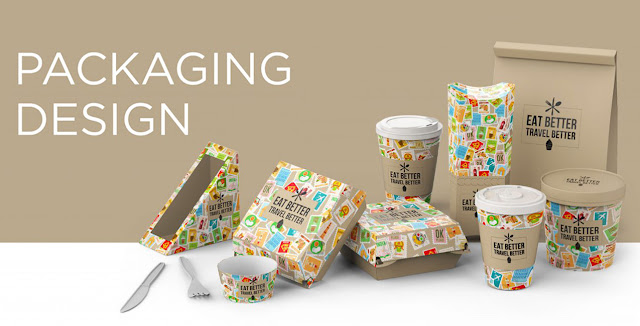The Art and Science of Food Packaging Design: Tempting Taste Buds
In the world of food products, the saying, "Don't judge a book by its cover," doesn't always hold true. Food packaging design plays a pivotal role in capturing consumer attention, conveying brand identity, and influencing purchasing decisions. It's a blend of art and science, where aesthetics meet functionality. In this blog post, we'll delve into the fascinating world of food packaging design, exploring its significance, elements, and how it can tantalize taste buds.
The Significance of Food Packaging Design:
First Impressions: Your product's packaging is often the first thing a consumer encounters. A well-designed package immediately grabs attention and piques curiosity.
Brand Identity: Packaging serves as a visual representation of your brand. The design should align with your brand's values, personality, and message.
Informative: Effective packaging communicates essential information, such as product name, ingredients, nutritional facts, and usage instructions.
Protection: Beyond aesthetics, packaging must ensure the product's safety and freshness, preserving its quality.
Key Elements of Effective Food Packaging Design:
Color Palette: Colors evoke emotions and can convey product attributes. For example, warm colors like red and yellow can stimulate appetite, while cool colors like blue can suggest freshness.
Typography: Choose fonts that are legible and align with your brand's personality. Typography should be consistent and easy to read.
Imagery: High-quality images of the product, ingredients, or enticing food photography can make the packaging more appealing.
Logo and Branding: Your logo should be prominent and consistent across all packaging. It's the symbol that consumers associate with your brand.
Shape and Structure: The physical design of the package should match the product's nature and purpose. Unique shapes can stand out on the shelf.
Materials: Consider eco-friendly materials that align with sustainability values. Packaging materials should also be appropriate for the product (e.g., glass for liquids, cardboard for dry goods).
Typography: Use clear, legible fonts for product names and information. The font choice should align with the brand's personality.
Design Trends in Food Packaging:
Minimalism: Clean, uncluttered designs with a focus on essential information and sleek aesthetics are on the rise.
Sustainability: Eco-friendly materials and designs that communicate a commitment to environmental responsibility are becoming increasingly popular.
Vintage and Retro: Nostalgic designs that evoke a sense of the past can create a unique and memorable look.
Custom Illustrations: Hand-drawn or custom illustrations add a personal touch and authenticity to packaging.
The Psychology of Food Packaging:
Color Psychology: Certain colors can evoke specific emotions or associations. For example, green may suggest freshness, while red can stimulate appetite.
Visual Hierarchy: Design should guide the viewer's eye, leading them to the most important information, such as the product name and logo.
Storytelling: Packaging can tell a brand's story or convey the product's origin, creating a deeper connection with consumers.
Conclusion:
Food packaging design is a blend of artistry, psychology, and functionality. It's a powerful tool for attracting customers, conveying brand identity, and ensuring product safety. When done right, it can elevate a food product from a mere commodity to a delightful and memorable culinary experience. So, whether you're launching a new product or revamping an existing one, remember that effective food packaging design can be the secret ingredient that tempts taste buds and leaves a lasting impression.



Comments
Post a Comment